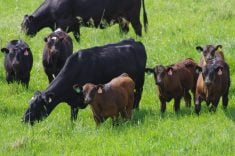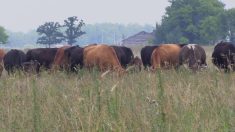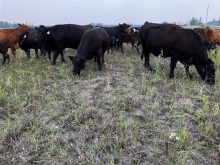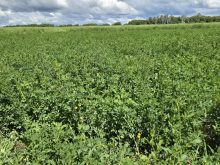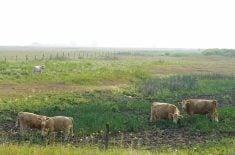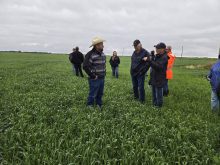DROUGHT With far more demand than capacity, the CFA is seeking to mitigate as much damage as possible
Federal funding will allow the Hay West relief initiative to ship another 15 million to 16 million pounds of hay through the winter, says the Canadian Federation of Agriculture (CFA).
That’s based on an average cost of 15 to 20 cents per pound, a spokesperson told the Co-operator.
However, that’s a fraction of the hay they have available, and far less than farmers need in Western Canada, said CFA president Mary Robinson.
“The shortage well exceeds our capacity,” she said. “We’re never going to be able to move enough hay to save every animal in Western Canada.”
Read Also

Finally getting paid for sustainable farming?
Alberta project says they might have a line on a workable ecosystem credit model to reward farmers for sustainability, and Manitoba might be next
Federal Ag Minister Marie-Claude Bibeau announced up to $3 million in federal funds to the project in a news conference with Robinson on Dec. 15. This adds to the $1 million the feds gave in September.
At that time, Hay West, which the CFA is co-ordinating, had moved about 5.6 million lbs. of hay from the Maritimes, Quebec and Ontario to the Prairie provinces. Of this, about 40 per cent went to Manitoba, 40 per cent to Saskatchewan, and 20 per cent to Alberta, Robinson told media.
Hay West was stalled because of lack of funds for about a month, said Robinson. She added it would hopefully start rolling again that day.
Eastern farmers have donated or pledged 100 million pounds of hay. Even that would not meet the entire hay deficit in Western Canada, Robinson said.
The CFA is focusing on sending hay to farms that have water and valuable breeding stock, said Robinson. They’re seeking to mitigate losses and keep the herd as robust as possible for future recovery.
The federal government with the governments of B.C., Alberta, Saskatchewan and Ontario have already pledged up to $825 million in AgriRecovery funding for drought relief.
Bibeau told media that the additional cash is about making feed available. Canadian hay tends to flow north and south, not east and west, she said. The funds will cover the increased freight costs.
People in Western Canada have no other options, said Robinson. They have no other inventory to choose from.
Hay West is also important as a “heartwarming exercise” given the mental health implications of what people have been through, she said.
Robinson put out a plea for further private, public and corporate donations and said she’d continue to seek more funding to ship hay.




